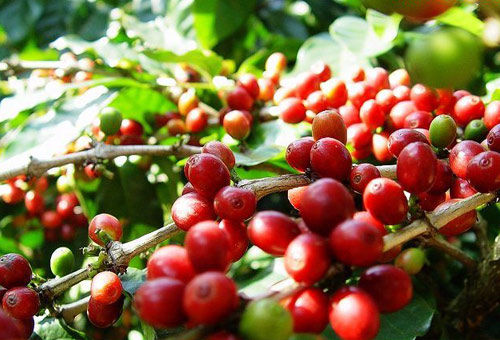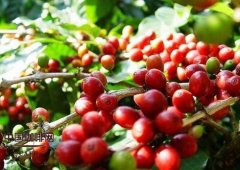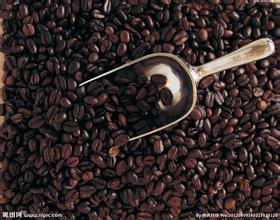Ripe beans of Pokuit Coffee in boquete production area of Kaisalouis Manor in Panama

Casa Ruiz, S.A., Panama. Manor, founded in 1920, is located in the Boquete producing area of Baru Volcano Volcano, which is located in the Poquet Valley in the skirt of Baru Volcano in northwestern Panama. Has experienced three generations of coffee planting experience, Caesar Louise (Casa Ruiz, S.A.) The family has brought together more than 300 local small family farms and small estate coffee farmers to join partners from planting, reprocessing, baking and marketing, unlike a single manor that cannot increase production scale. Coffee varieties are Typica, Caturra, Catuai, Mundo Novo and Bourbons. The average annual rainfall is 3000 millimeters (between May and November), the annual average temperature is 14,000 degrees C, and the altitude is more than 1400 meters. Casa Ruiz, S.A. The family and his coffee partners chose to follow the Boquete growing area, which is traditionally environmentally friendly and maintains the natural ecosystem, and because the natural trees in the area provide rich natural environmental resources, the environment has become a transit habitat for migratory birds.
Casa Ruiz, S.A., Panama. Because of his high-quality technology, strict control of every detail, layer upon layer of screening, recording and review, he is undoubtedly one of the best estates in Best of Panama. This batch is exported through his own company, from raw bean appearance, consistency and freshness to dry aroma and flavor, with very distinctive aroma performance, clean and fresh taste, strange fruit flavor and aroma. Aromas of elegant and charming floral perfume, aromas of rice, almond tea, ripe apples, fermented ripe fruits, berries, cherries, dates, brown sugar, jasmine, oranges, sweetness, mild and clean balance, long-lasting, lively and rich fruit in finish.
Important Notice :
前街咖啡 FrontStreet Coffee has moved to new addredd:
FrontStreet Coffee Address: 315,Donghua East Road,GuangZhou
Tel:020 38364473
- Prev

Costa Rica San Roman washing plant coffee beans cooked beans representative of Central and South America
The best coffee in Costa Rica seems to come from small processing plants, spread across several major coffee producing areas, including Tarazu and the western valley. This so-called coffee revolution originated 15 years ago and has greatly changed the way bean baking experts and importers think about Costa Rican coffee. Take the processing plant as the center, collect coffee beans from the surrounding small farms for processing, most of these farms are small societies
- Next

High-quality coffee Guatemalan coffee processing method Guatemalan coffee bean flavor
The extra-hard coffee beans here are full-grained, delicious and balanced, and the coffee made with them is pure and rich. Guatemala coffee once enjoyed a reputation as the best quality coffee in the world, but its quality also declined for a time. What is gratifying, however, is that its reputation is gradually being restored. In 1750, Father Jesuit introduced coffee trees to Guatemala, at the end of the 19th century.
Related
- Does Rose Summer choose Blue, Green or Red? Detailed explanation of Rose Summer Coffee plots and Classification in Panamanian Jade Manor
- What is the difference between the origin, producing area, processing plant, cooperative and manor of coffee beans?
- How fine does the espresso powder fit? how to grind the espresso?
- Sca coffee roasting degree color card coffee roasting degree 8 roasting color values what do you mean?
- The practice of lattes: how to make lattes at home
- Introduction to Indonesian Fine Coffee beans-- Java Coffee producing area of Indonesian Arabica Coffee
- How much will the flavor of light and medium roasted rose summer be expressed? What baking level is rose summer suitable for?
- Introduction to the characteristics of washing, sun-drying or wet-planing coffee commonly used in Mantenin, Indonesia
- Price characteristics of Arabica Coffee Bean Starbucks introduction to Manning Coffee Bean Taste producing area Variety Manor
- What is the authentic Yega flavor? What are the flavor characteristics of the really excellent Yejasuffi coffee beans?

